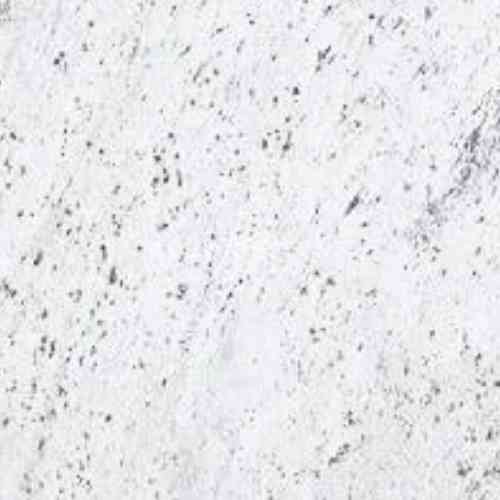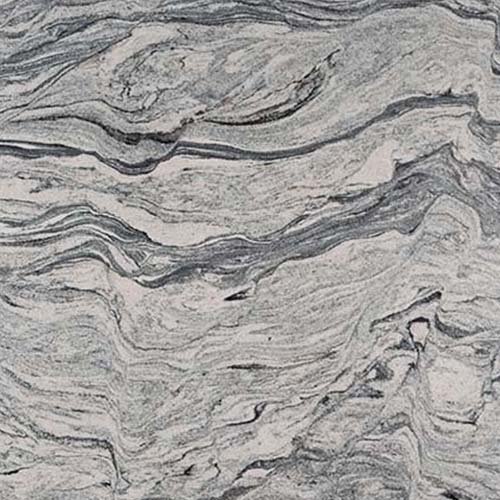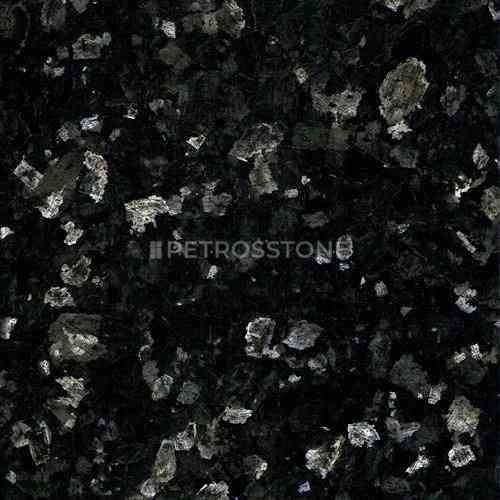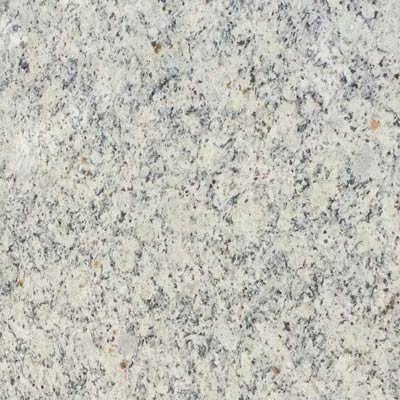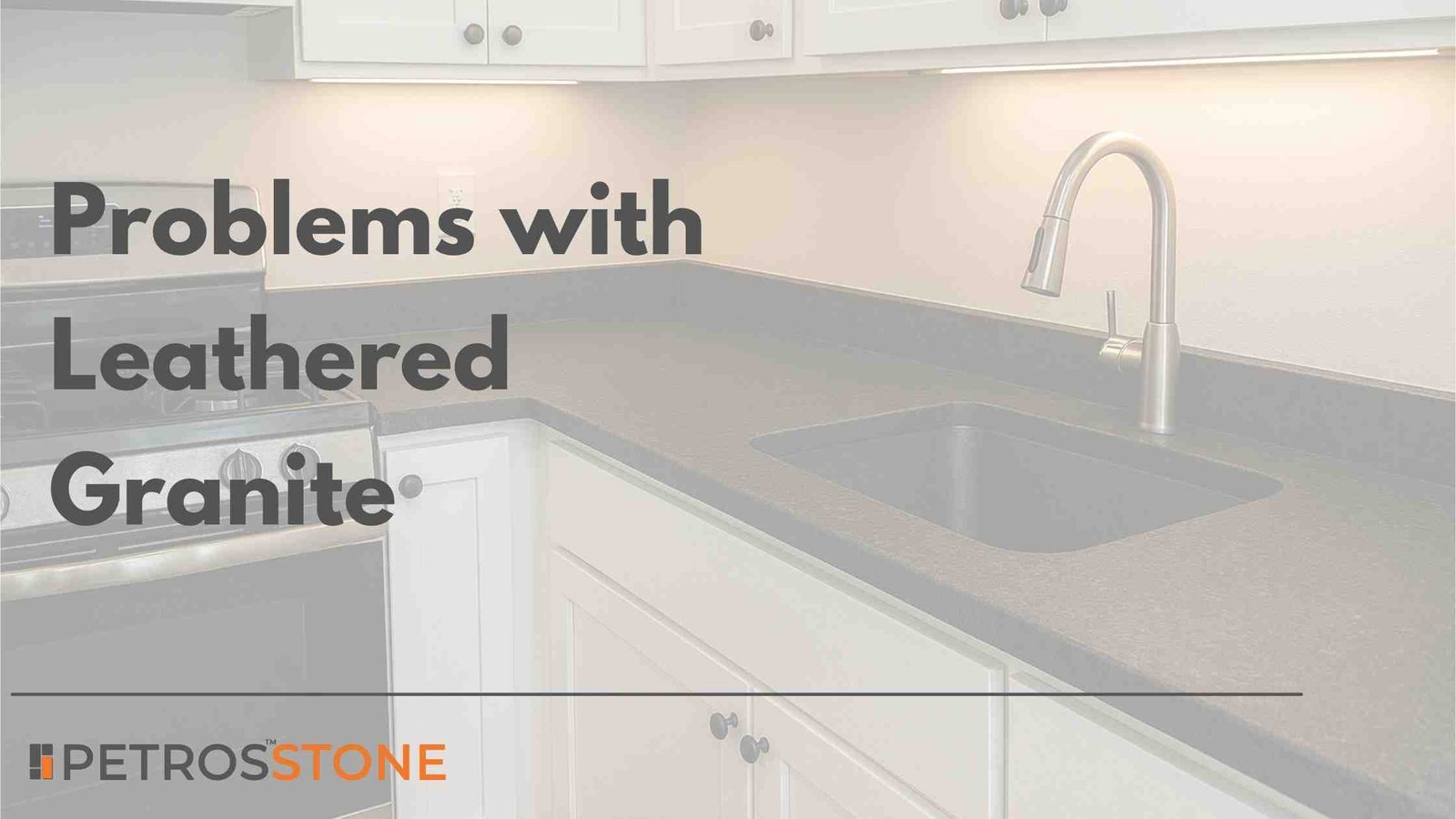
Leathered granite is a beautiful natural stone material to use in kitchen counters, bathrooms, and interior walls and ceilings. The soft, matte finish lends it a sense of luxury and touch that is lacking in polished granite. However, behind that beauty, there are many problems with leathered granite countertops– from troubles involved in upkeep to troubles in installations.
What Is Leathered Granite?
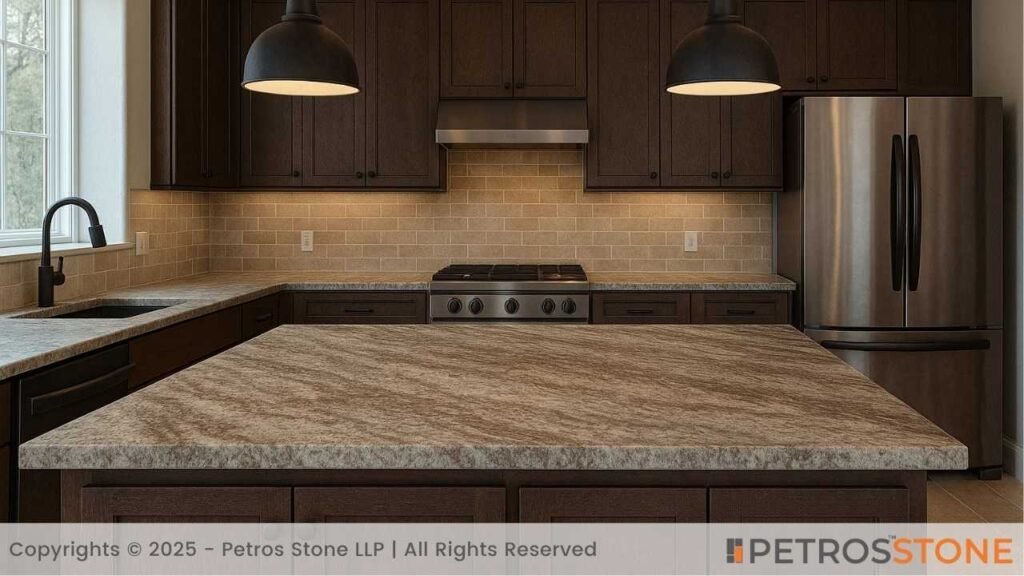
Leathered granite is natural stone that has been slightly polished, then either brushed or tumbled to produce a very soft, matte texture – the effect of leather.
This finish decreases the amount of shine and increases natural variations of colour, but will change the nature of the surface characteristics that impact both durability and maintenance.
Common Problems with Leathered Granite
1. Uneven Surface Texture
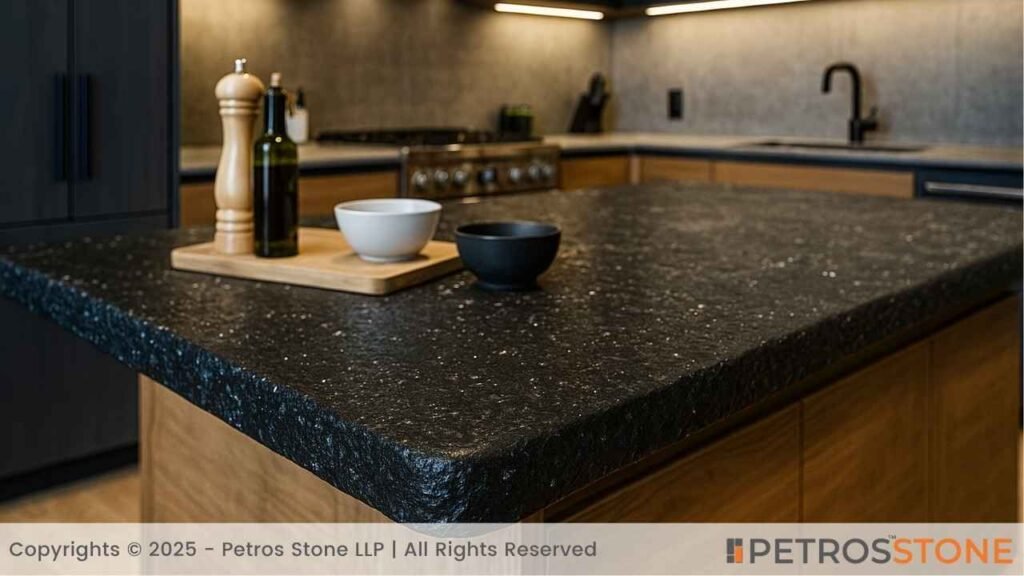
Leather treatment produces an uneven texture. Even some are smoother, some are rough. This may result in:
- Inability to roll dough – lumpy grasp.
- Stuck dust, crumbs or dirt forms in holes.
- Placement issues with wobbly dishes/ decorations.
Table 1: Surface Texture Issues
| Problem | Cause | Effect |
| Uneven feel | Variable brushing/tumbling | Inconsistent surface texture |
| Food/dirt buildup | Pits and grooves trap particles | Requires deep cleaning |
| Dish instability | Uneven contact points | Dishes may wobble or tip |
2. Staining and Water Retention
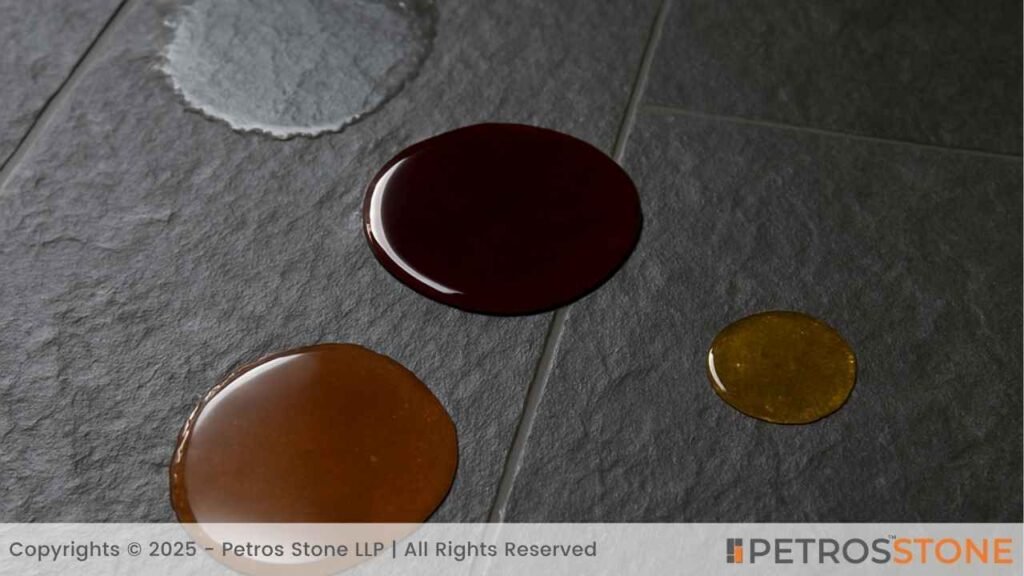
- Leathering makes the surface more porous and, therefore, fluids absorb more readily than polished granite.
- Water, wine, coffee, oil: all of them will be soaked up, as long as spills are not sealed.
- Stains become bright and permanent without prompt attention.
- Mineral deposits and discolouration can be caused by water retention.
Table 2: Porosity and Staining
| Liquid Type | Risk Level on Leathered Granite | Risk on Polished Granite |
| Coffee or Tea | High (absorbs quickly) | Low (sealed, slick) |
| Cooking Oil | Very High (golden or dark stains) | Moderate (oil beads up) |
| Red Wine | Very High (deep staining) | Moderate (wipeable) |
| Water | Moderate (mineral rings) | Low (easy wipe) |
3. Cleaning Challenges
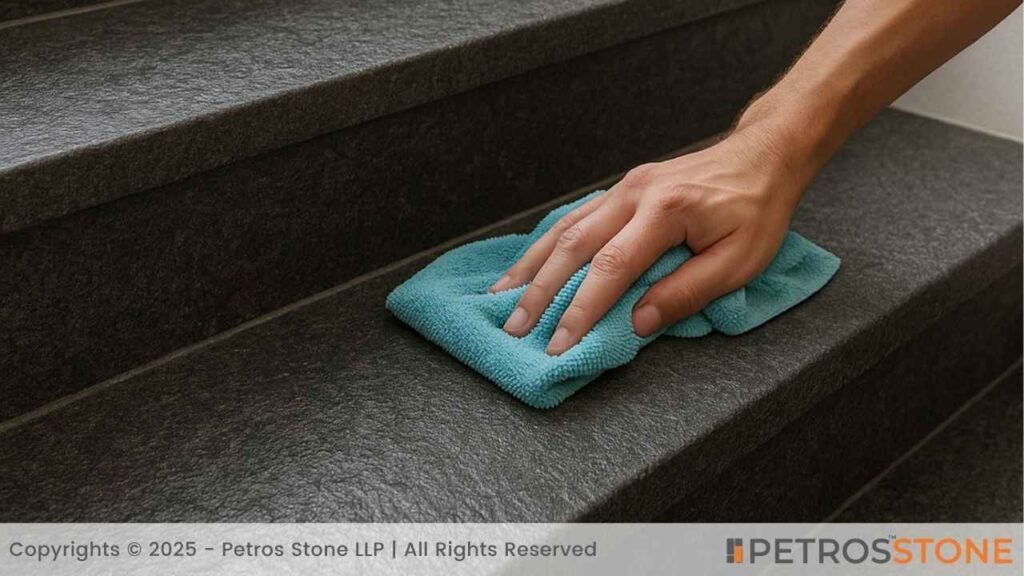
Leathered granite cleaning is more cumbersome:
- Grease and grime are trapped on the surface.
- Paper towels scratch; microfiber cloths are needed.
- Messy areas may need stronger cleaners (pH balanced).
- The food particles sink into small holes and cracks, necessitating cleaning every day.
- Greasy fingerprints may produce dull marks that are not easily wiped out.
- The textured surface makes the crumbs and dust more difficult to locate and clean.
- The finish may be worn off or stained by harsh cleaners or abrasive cleaning pads.
4. Fingerprints, Smudges, and Oil Marks
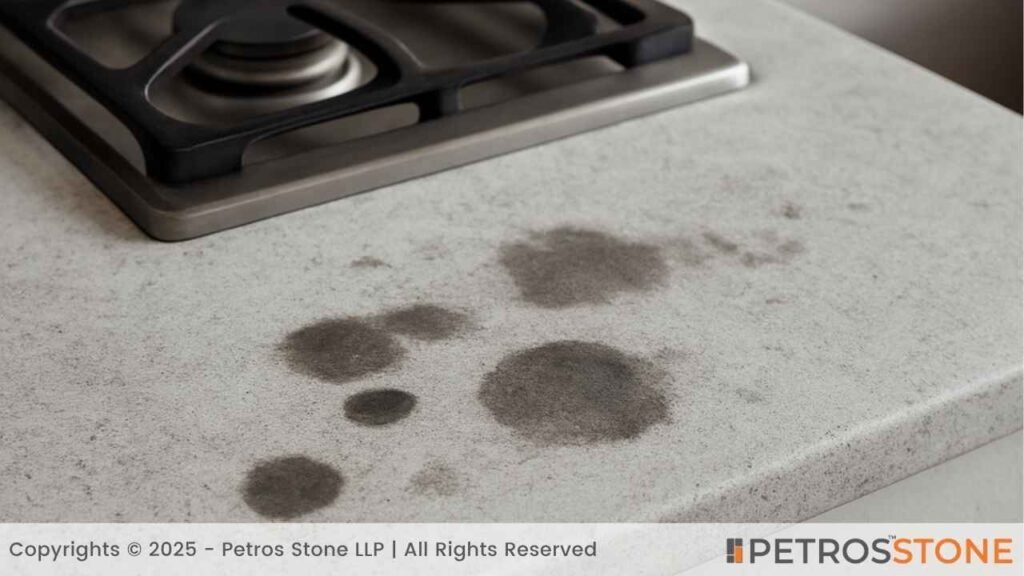
- The matte finish conceals shine without concealing oil.
- Oily touches and cooking spills display dark spots.
- Should be cleaned frequently in high-touch areas (stoves, around the sinks).
- Oily fingerprints can accumulate on the handlebars of drawers and appliances edges.
- Products with oil, such as lotions or sprays, may stain permanently unless it is rubbed off fast.
- A maintained, sealed surface may be worn by frequent wiping with cleaners.
- The matte texture causes smudges to be less noticeable initially, thus allowing build-up to develop before it can be noticed.
5. Dull Appearance Over Time
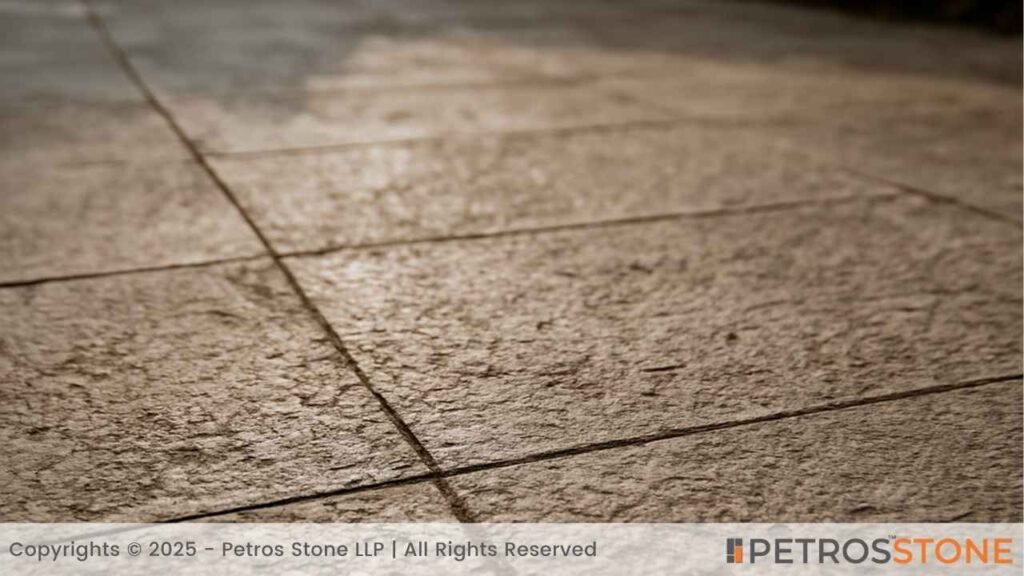
Without proper care, the texture ages rapidly:
- Gradual dulling in spite of sealing.
- Unusual sheen on the countertop.
- Physical wear patterns in the vicinity of appliances and cutting areas.
- Regions that are exposed to the sunlight can fade/become lighter with time.
- There are dark patches due to the accumulation of grease or residue.
- Constant cleaning may lead to the appearance of polish-like spots, and this is a disaster because it will destroy the uniform variety of the matte appearance.
- The accumulation of the sealer can lead to patchy or cloudy finishes.
Maintenance and Upkeep Issues

1. Daily Cleaning Requirements
Leathered granite requires direct care:
| Task | Leathered Granite | Polished Granite |
| Wipe spills | Immediately (daily) | Within several hours |
| Deep cleaning | Weekly recommended | Monthly or optional |
| Tools | Microfiber, suede brush | Microfiber, gentle cleaner |
Little stains require being wiped immediately. In the case of grease, a special cleaner or soft brush is normally needed.
2. Sealing Frequency
Leathered granite requires more frequent sealing:
- Every 3-6 months.
- The use determines frequency – cooking and baking zones require more care.
- Omitting a seal increases porosity dramatically.
Signs of needing sealing include:
| Indications for Resealing | Why It Matters |
| Water stops beading | The surface is absorbing liquid |
| Dark spots appear after spills | Stains are forming |
| The texture feels dry/sandy | The seal has worn off |
3. Product Compatibility Concerns
Just any cleaner or sealer is not good:
- Do not use products that are acidic (vinegar, lemon, bleach).
- Apply sealant designed to seal on leathered granite; some of the polished sealers seal with a film.
- When applying in a widespread way, always test in an inconspicuous corner.
Installation and Fabrication Concerns
1. Edge Finishing Difficulties
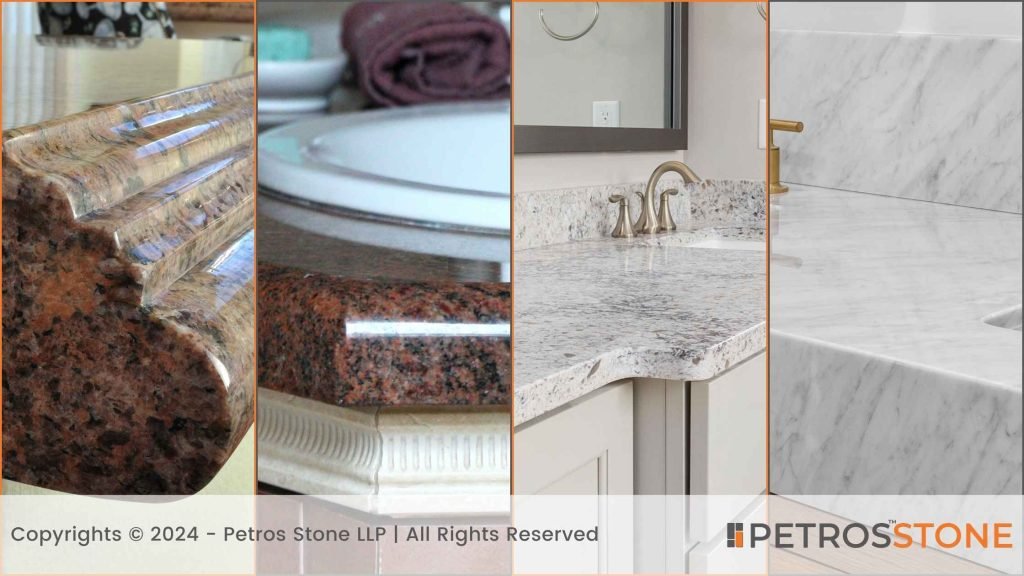
The edges are difficult to retain their leather texture:
- Simple or rounded (bevel) edges are most optimal.
- Complex edges (ogee, waterfall) are difficult and chip easily.
- Most fabricators would advise that edges be left polished to be durable.
2. Inconsistency in Texture
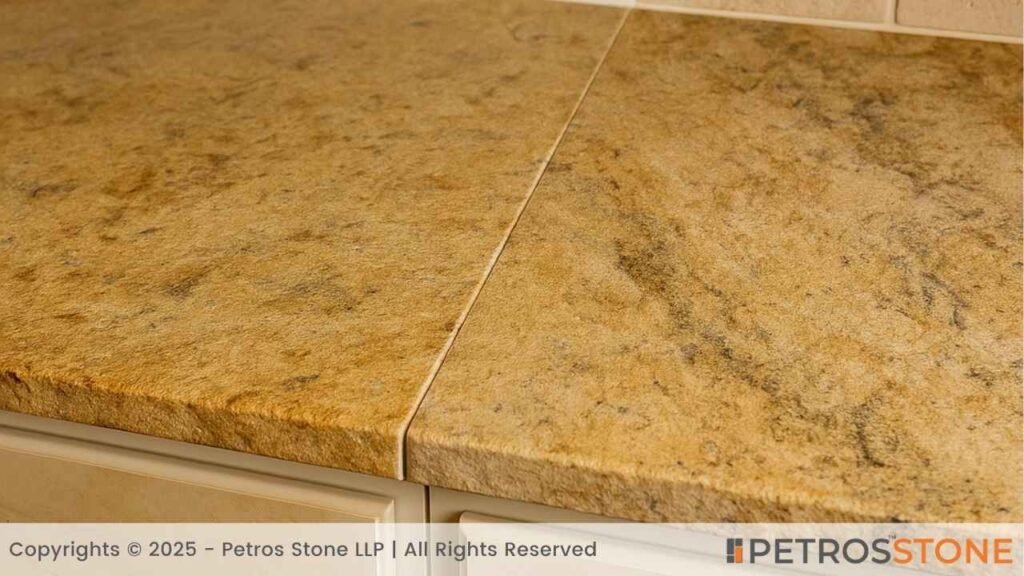
There can be considerable variance in texture between slabs:
| Issue | Cause | What Happens |
| Texture mismatch | Slabs brushed differently | Surface feels different across seams |
| Colour tone shift | Brushing filters differently | One slab looks lighter or darker |
| Seam highlight | Abrupt texture/colour changes | Seams become visible and distracting |
The presence of seams can be minimised by utilising longer, continuous slabs.
3. Limited Availability and Expertise
Not every employee is used to working with a leathered finish:
| Challenge | Result |
| Few fabricators | Higher labour costs and delays |
| Skill gaps | Risk of rough or uneven finishes |
| Material availability | Longer lead time for slabs/orders |
The most important thing is to work with a professional stone installer to avoid errors.
Aesthetic Limitations

1. Design and Style Compatibility
The leathered granite gives a softer organic feel that can be in conflict with ultra modern looking interiors:
- Doesn’t reflect light like polished stone.
- Less suitable when you want a high gloss or sleek lighting effect.
- Fits better with rustic, farmhouse or traditional matches.
Table: Style Compatibility Overview
| Interior Style | Compatibility with Leathered Granite | Notes |
| Rustic/Farmhouse | ✅ High | Enhances natural materials and textures |
| Modern/Minimalist | ❌ Low | Matte surface contrasts with clean lines |
| Industrial | ✅ Moderate | Works well if paired with raw finishes |
| Traditional | ✅ High | Blends well with warm tones and textures |
| Glam/High-Gloss | ❌ Low | Dulls the effect of shiny accessories |
2. Issues with Lighting and Colour Matching
Texture affects the appearance:
- Matte surfaces absorb light, and rooms may look slightly darker.
- Texture may vary in colour tone under varying lights (daylight and evening light).
- Swatches can be deceiving: the fabricator slab lighting is not usually the same as your home lighting.
Table: Impact of Lighting Types on Leathered Granite Appearance
| Lighting Type | Effect on Leathered Granite | Recommendation |
| Warm (Yellow) Light | Enhances beige or brown tones, but may mute cooler shades | Test under lighting before choosing a colour |
| Cool (White) Light | Makes darker granite look greyer and less vibrant | Ideal for dark kitchens needing more brightness |
| Natural Daylight | Shows true colour and texture; varies throughout the day | View full slabs in natural light before buying |
| LED Spotlights | May highlight uneven texture and surface dullness | Use dimmable or diffused lights for balance |
| Under-cabinet Lights | Can cause shadows, exaggerating texture irregularities | Choose uniform light placement |
Real-World Experiences

Homeowner Feedback
- Leathered granite must be cleaned more often around stoves and sinks because of the smudge deposits.
- The most common complaint by homeowners is that sealing is more frequent than proposed.
- Oil, coffee, or wine stains are to be expected when spills do not get cleaned straight away.
- With use, extreme-wear areas can be irregularly textured or shiny.
Installer and Fabricator Insights
- Intricate edge designs are not preferred since there is a high risk of chipping.
- It is possible to have different textures and colours even within the same batch of slabs.
- There is a greater challenge in accomplishing perfect joints than in polished granite.
Pros and Cons Summary
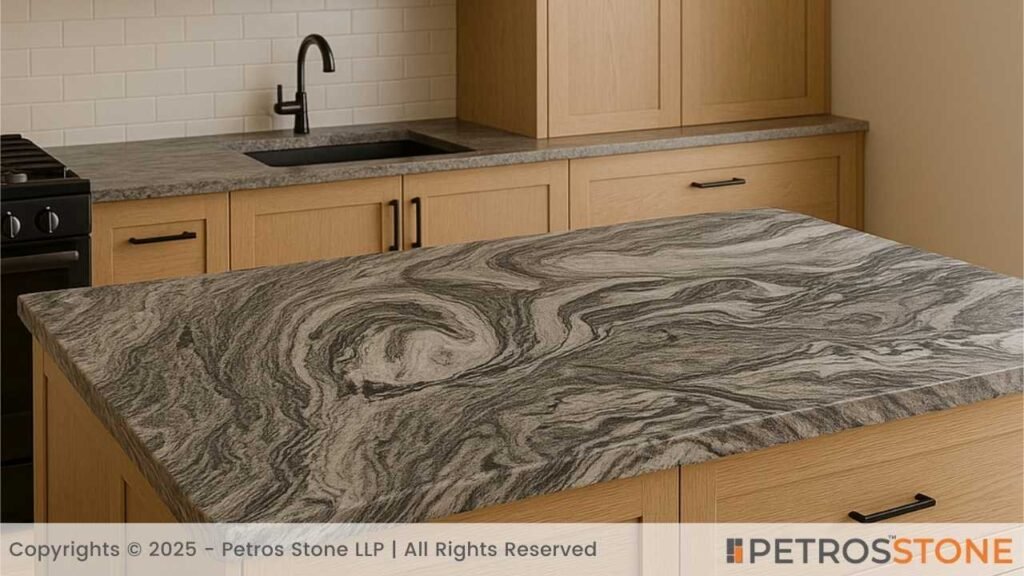
Advantages of Leathered Granite
| Advantage | Description |
| Unique Texture and Feel | Soft, matte surface adds tactile appeal and a luxurious, organic finish. |
| Hides Fingerprints & Smudges | Matte finish reduces visible fingerprints and water spots compared to polished granite. |
| Camouflages Scratches | Minor scratches and etching are less noticeable due to the textured surface. |
| Natural, Rustic Look | Enhances the natural patterns of the stone, ideal for rustic or earthy designs. |
| Non-Slip Surface | Slight texture offers better grip, making it safer for wet kitchen or bathroom counters. |
| Less Reflective | Reduces glare from lighting—suitable for soft or ambient light environments. |
| Low Gloss Maintenance | Unlike polished granite, it doesn’t require regular buffing to maintain shine. |
| Visual Depth and Warmth | Brings out the deeper tones and grains of the stone, giving it a rich character. |
Drawbacks to Consider
| Drawback | Impact |
| High porosity | Stains easily, needs frequent sealing |
| Tricky to clean | Dirt and oil get trapped in the texture |
| Inconsistent texture | Matching slabs is challenging |
| Limited edge options | Simple profiles only, may need polished edges |
| Design mismatch potential | Not for high-gloss modern interiors |
| Requires expertise install | Few fabricators, higher labour costs |
Better Alternatives to Consider
Honed or Polished Granite
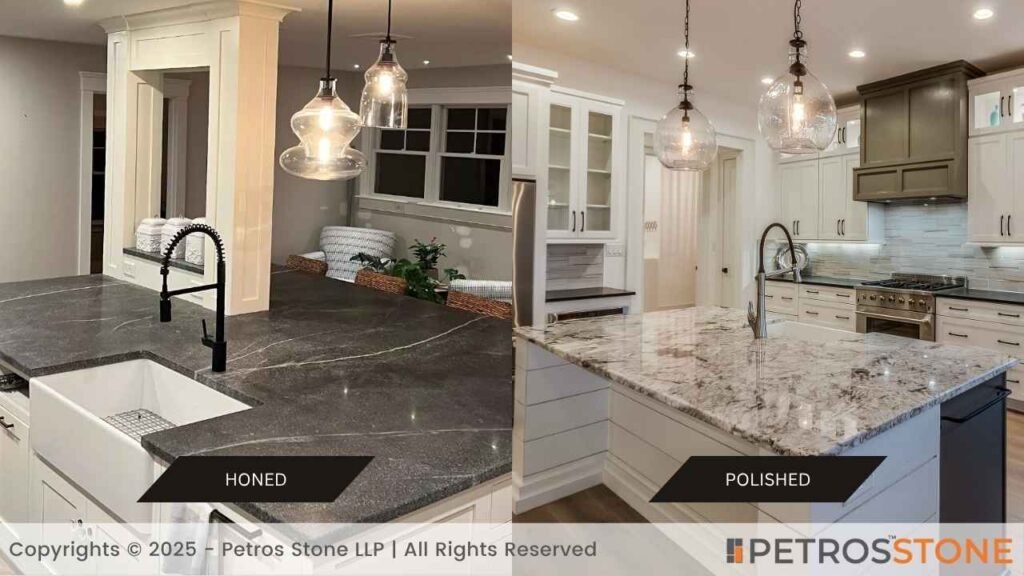
Two common finishes can be honed and polished granite, which vary in their texture, finish and maintenance.
The following is a comparative list to guide you in making a decision on the correct alternative:
Table: Honed vs Polished Granite Comparison
| Feature | Honed Granite | Polished Granite |
| Finish | Smooth and matte | Shiny and reflective |
| Texture | Velvety, softer to the touch | Slick, smooth surface |
| Appearance | Subtle, muted colours | Bright, vibrant colours |
| Scratch Visibility | Hides small scratches better | Scratches are more visible |
| Stain Resistance | More porous; needs sealing | Less porous; still benefits from sealing |
| Maintenance | Medium—requires regular sealing and cleaning | Low to medium—easier to wipe and keep clean |
| Best Suited For | Rustic, traditional, or soft modern spaces | High-end, modern, or luxury-style kitchens |
| Common Uses | Kitchen countertops, bathroom vanities | Kitchen islands, commercial kitchens |
| Light Reflection | Absorbs light; ideal for soft lighting | Reflects light; makes space appear larger |
| Durability | Very durable with proper care | Very durable; highly resistant to wear and tear |
Quartz, Soapstone, and Other Options
- Quartz: Does not allow sealing since it is non-porous, impervious to scratches and stains. Comes in various colours and patterns, even in matte. Suitable for contemporary, low-maintenance kitchens.
- Soapstone: Naturally matte and soft-textured. Chemical- and heat-resistant. Patinas to a natural shade of bronze. Easy to scratch, durable by sanding.
- Solid Surface (e.g. Corian): Cleanable and seamless, and can be inexpensive. Looks like stone, but has less strength and can resist heat.
- Porcelain Slabs: Incredibly resilient, heat-resistant, UV-resistant, and have matte finishes. Indoor and outdoor use are appropriate.
- Concrete: Modular and contemporary. Requires sealing, but is an authentic industrial design.
Need more Help?
Leathered granite is delicately soft to the touch and a spectacular design element to any kitchen or bathroom. However, it requires a lot more care, sealing, professional installation, and care regarding the selection of edge styles. Many homeowners may find that the textural and colouring imbalance, porosity, and the effort to clean it may balance out.
Polished granite or quartz could be preferable if you desire low-maintenance, high-lustre or very modern kitchen. Honed granite or soapstone would be excellent choices to get a matte, though less difficult to take care of, surface.
Prior to making up your mind:
- Request several slabs under your own lights.
- Obtain distinctly outlined sealing and cleaning schedules.
- Select edge styles that your fabricator can perform well.
The softer luxury of leathered granite can be yours with the proper planning–just be prepared to do some additional work involved.
Feel free to get in touch for a free consultation, quote, and get a detailed understanding from our experts here at Petros®. Visit https://petrosstone.com/ or call +91-8446360361 and WhatsApp

Hello!
I’m Dr Mridali, a content writer with a background in dentistry and a passion for turning complex topics into clear, engaging stories. From healthcare to architecture, I create blogs that inform, educate, and connect with readers. With every piece, I aim to blend accuracy with creativity to make information truly valuable.
Brown Granite
White Galaxy Granite
Blue Bahia Granite
Silver Cloud Granite
Black Pearl Granite
Dallas White Granite


